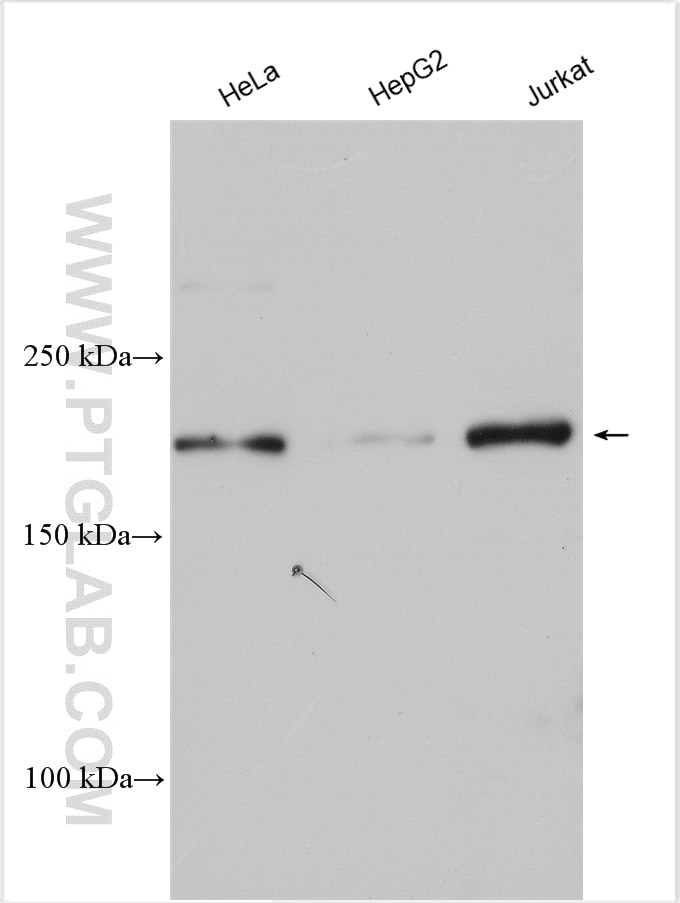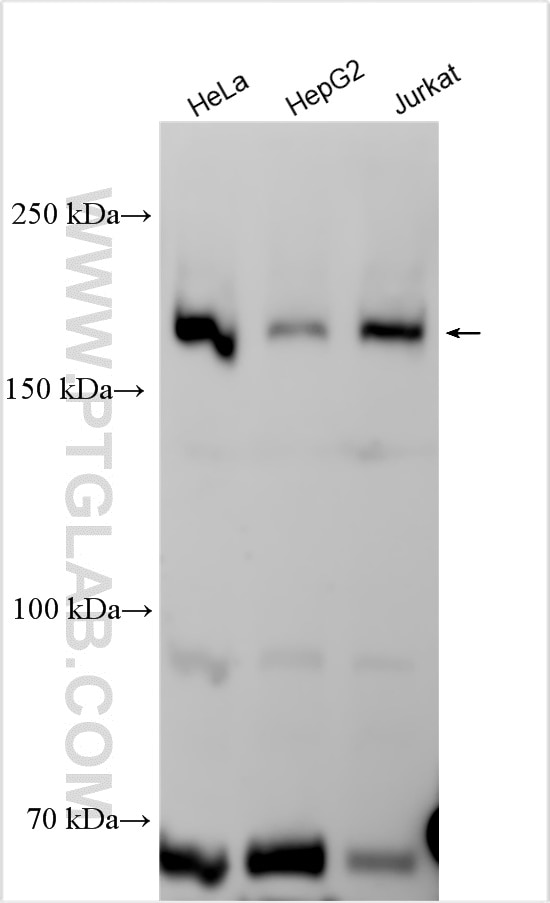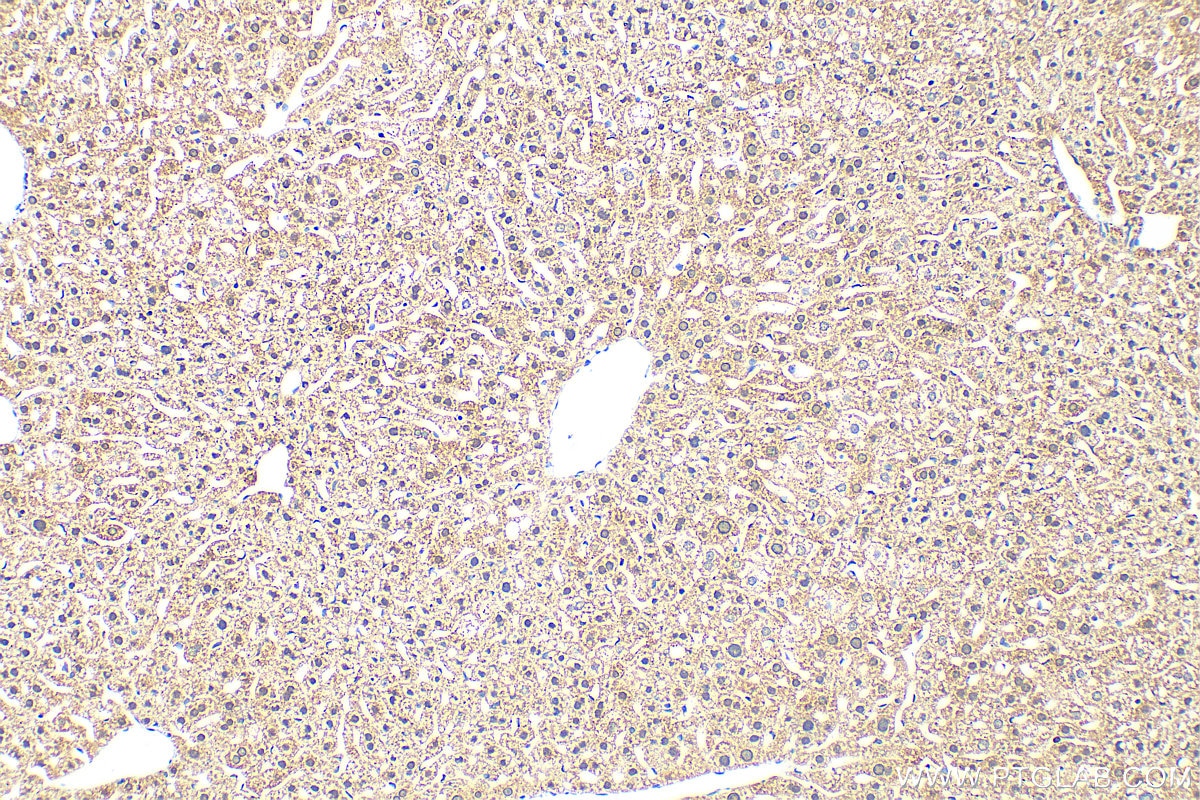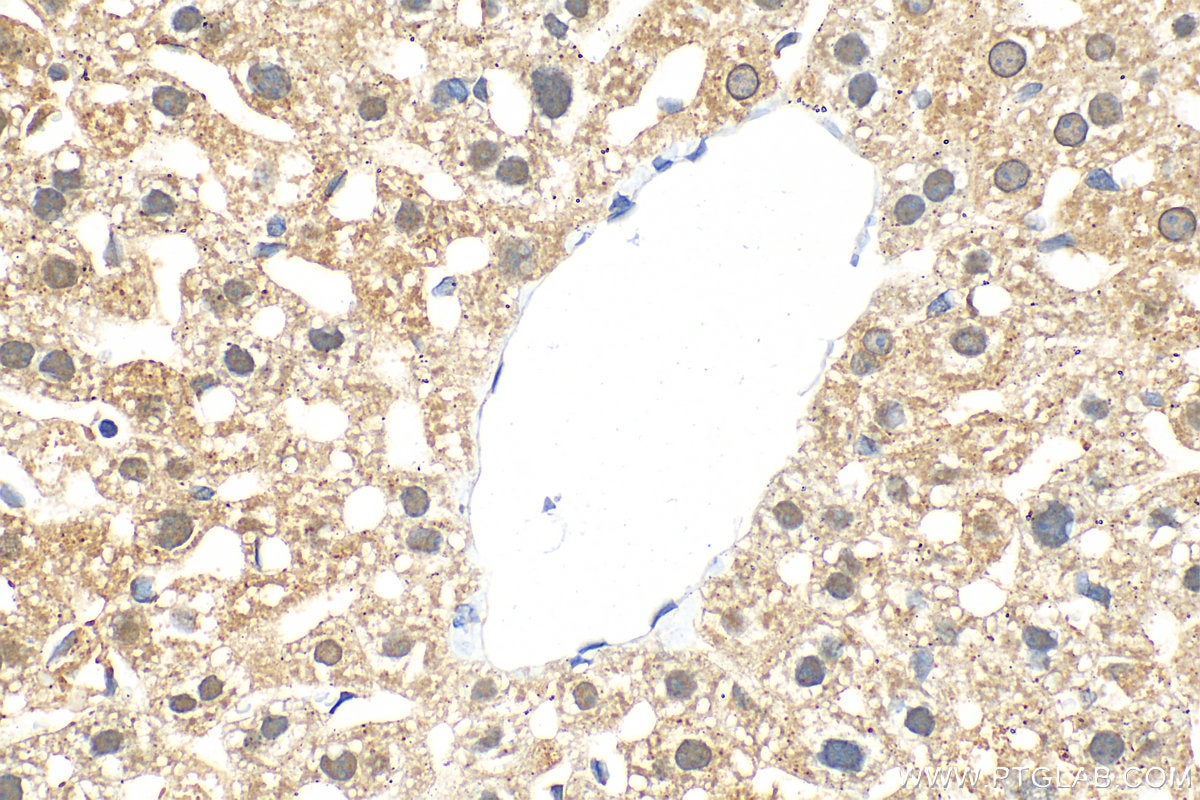Tested Applications
| Positive WB detected in | HeLa cells, HepG2 cells, Jurkat cells |
| Positive IHC detected in | mouse liver tissue Note: suggested antigen retrieval with TE buffer pH 9.0; (*) Alternatively, antigen retrieval may be performed with citrate buffer pH 6.0 |
Recommended dilution
| Application | Dilution |
|---|---|
| Western Blot (WB) | WB : 1:500-1:1000 |
| Immunohistochemistry (IHC) | IHC : 1:200-1:800 |
| It is recommended that this reagent should be titrated in each testing system to obtain optimal results. | |
| Sample-dependent, Check data in validation data gallery. | |
Product Information
30188-1-AP targets TASOR in WB, IHC, ELISA applications and shows reactivity with human, mouse samples.
| Tested Reactivity | human, mouse |
| Host / Isotype | Rabbit / IgG |
| Class | Polyclonal |
| Type | Antibody |
| Immunogen |
CatNo: Ag32757 Product name: Recombinant human TASOR protein Source: e coli.-derived, PGEX-4T Tag: GST Domain: 1361-1512 aa of NM_001112736.1 Sequence: GKWQWKVHCKFQKKLKELGRLNAKALSLLTLLNVYQKKHLVEILSYHNCDSQTRNAPELDCLIRLQAQNIQQRHIVFLTEKNIKMLSSYTDNGIVVATAEDFMQNFKNLVGYHNSITEENLPQLGANENLESQSALLENDEKDEEDMSLDSG Predict reactive species |
| Full Name | chromosome 3 open reading frame 63 |
| Calculated Molecular Weight | 189 kDa |
| Observed Molecular Weight | 189 kDa |
| GenBank Accession Number | NM_001112736.1 |
| Gene Symbol | TASOR |
| Gene ID (NCBI) | 23272 |
| RRID | AB_2935527 |
| Conjugate | Unconjugated |
| Form | Liquid |
| Purification Method | Antigen affinity purification |
| UNIPROT ID | Q9UK61 |
| Storage Buffer | PBS with 0.02% sodium azide and 50% glycerol, pH 7.3. |
| Storage Conditions | Store at -20°C. Stable for one year after shipment. Aliquoting is unnecessary for -20oC storage. 20ul sizes contain 0.1% BSA. |
Background Information
TASOR, also known as FAM208A or C3orf63, is the central subunit of the human silencing hub (HUSH) complex. HUSH regulates deposition of the epigenetic mark H3K9me3. TASOR has a catalytically-inactive PARP domain which is necessary for targeted H3K9me3 deposition (PMID: 33009411). TASOR and the RNA deadenylase CCR4-NOT complex scaffold CNOT1 synergistically repress HIV proviral expression (PMID: 35013187). TASOR affects the genome stability during the cellular division and also interacts with methylation complex in adult tissues (PMID: 34272044).
Protocols
| Product Specific Protocols | |
|---|---|
| IHC protocol for TASOR antibody 30188-1-AP | Download protocol |
| WB protocol for TASOR antibody 30188-1-AP | Download protocol |
| Standard Protocols | |
|---|---|
| Click here to view our Standard Protocols |
Reviews
The reviews below have been submitted by verified Proteintech customers who received an incentive for providing their feedback.
FH Tsimafei (Verified Customer) (09-22-2025) | Antibody recognises the band of the expected size as well as several non-specific bands
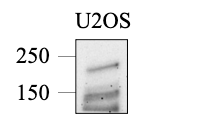 |
FH Julia (Verified Customer) (07-02-2025) | Works well! Validated with KO.
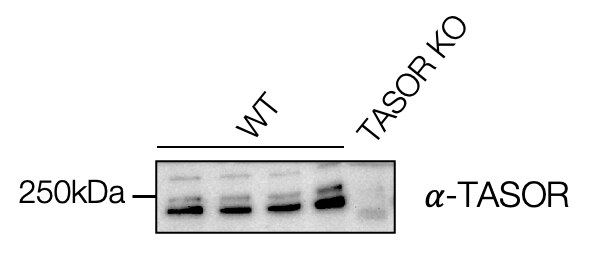 |
FH Roy (Verified Customer) (06-12-2024) | Could detect TASOR in HeLa cells and Jurkat cells (1/1000 dilution - Overnight incubation at 4°C)
|

